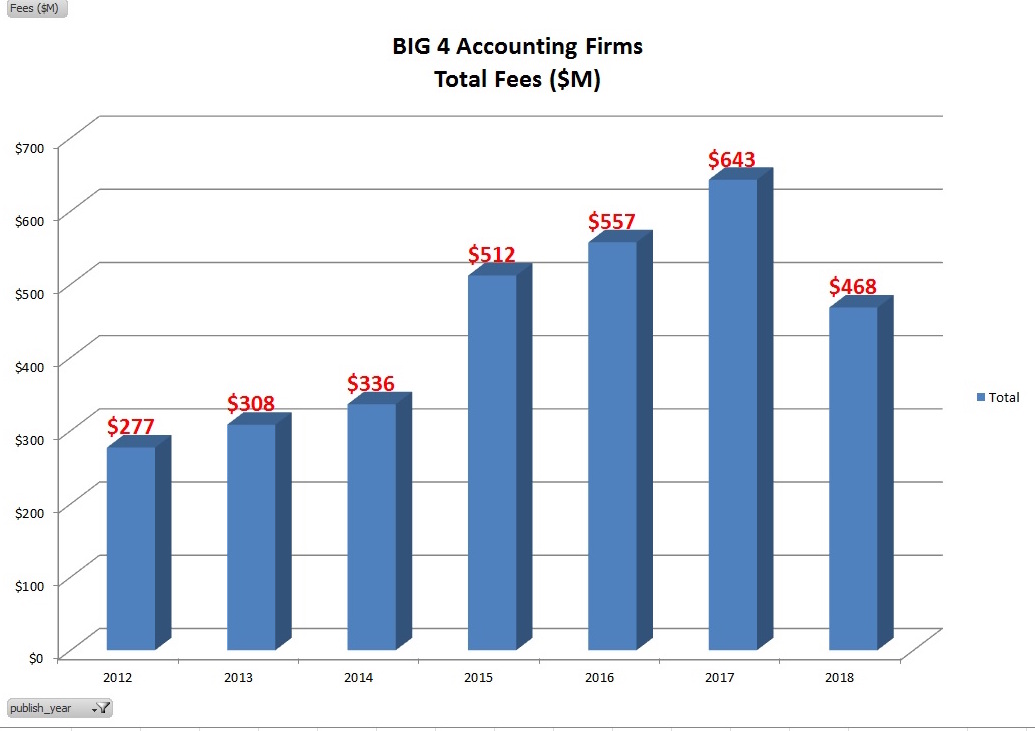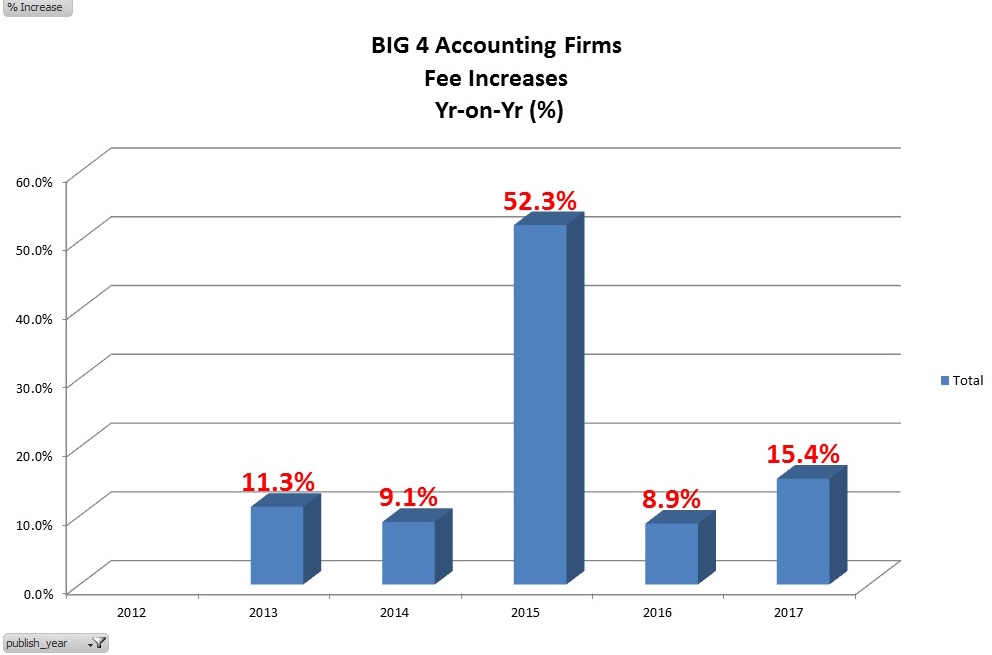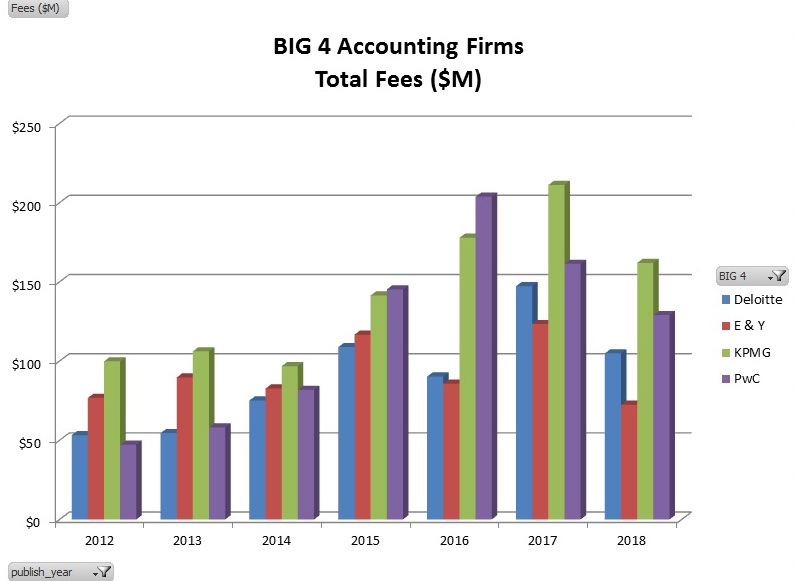The Big Four global accounting firms have banked $3.1 billion in taxpayer income in the past six years for government consulting. That’s three thousand one hundred million dollars in government revenue to just four firms – PwC, EY, KPMG and Deloitte – for providing advice.
The four firms are major political donors. Ironically, as the architects of global tax avoidance, the Big Four are more responsible than any other institutions for undermining the government’s tax base thanks to their tax avoidance advice for multinational clients. Yet they are also the biggest winners of taxpayer consultancies.
Analysis by data warehousing expert, Greg Bean, has filtered down the numbers to show a dramatic escalation in government outsourcing since the Abbott/Turnbull/Morrison government came to office.

The $3.1 billion represents around 7,300 government contracts. Meanwhile , Big Four revenues shot up by double digits in Australia again last year. Collectively, they posted total income of $7.8 billion thanks, in good measure to the government outsourcing bonanza.
Mind you, these figures relate only to Federal government spending.
The states lavish the Big Four with hundreds of millions of dollars in consulting work too, although transparency over state spending is extremely poor so it is impossible to get a clear picture of how the states spend their tax.
The most alarming thing about these figures (refer to the chart below) is the spike in 2015 when the value of taxpayer mandates shot up 52 per cent – and when Tony Abbott was Prime Minister. Extrapolating the figures for this year based on mandates awarded to September 16, 2018, the Big Four are on track to post another record at a projected $658 million in federal government income.

Despite their size and the critical role they play in government in this country, the Big Four are only required by regulators to disclose their annual revenue. Collectively, they reveal nothing more than that. Due to their secretive partnership structures they do not publish financial statements. Income tends to rise ten per cent a year.
Collectively they posted an $800 million increase in revenue in 2018.

The chart above shows PwC has overtaken KPMG in the past two years as winning the most money in government contracts. Over the six and a three quarter years analysed, KPMG picked up $995 million in government work versus $826 million for PwC, $647 million for EY and $634 million for Deloitte.
This blow-out in government spending is matched by a rise in procurement costs, particularly in Defence, as reported her last week.
The all reported their June 30, 2018 “results” last month, if they can be labelled “results” because there is only one number disclosed: revenue.
PwC posted a 10.8 per cent increase in revenue to $2.35 billion.
“Our Australian Consulting business had an outstanding year with People & Org and Risk Consulting both delivering 27% revenue growth, Business & Performance Consulting achieving 17% revenue growth and Strategy& 19% revenue growth.”
EY Australia’s revenue rose 9.8 per cent to $1.785 billion. KPMG Australia generated revenues of $1.64 billion, up by 9.2 percent on the previous year. The firm employed more than 7,000 people, with record intakes of both new partners and graduates.
Deloitte also posted another record year, its fourth year of 15 per cent revenue growth. Revenue in Australia was $2.013 billion.
Besides advising the government on tax, while advising their clients on how to pay as little as possible tax, the Big Four are members of the Business Council of Australia which calls for cutting wages and lower taxes for large corporations.
Truly, this lot are the global elite of corporate welfare recipients.
Editor’s note:
The Austender data is inconsistent prior to 2012 so, to give the best like-for-like, we only went back seven years. There were scores of seperate entities for each of the Big Four firms, making the data harder to analyse. This needs to be fixed by government, poor reporting standards, as do the useless state tender databases.
As to the Big Four themselves, these are huge institutions with thousands of fine staff – generally very bright and well intentioned. The point of these investigations is that these are also the most powerful institutions in the world, institutions which have infiltrated governments and have a huge influence on policy. They require scrutiny, monitoring. In this, the media has failed.
This article was published by Michael West on the 20th of September 2018.



